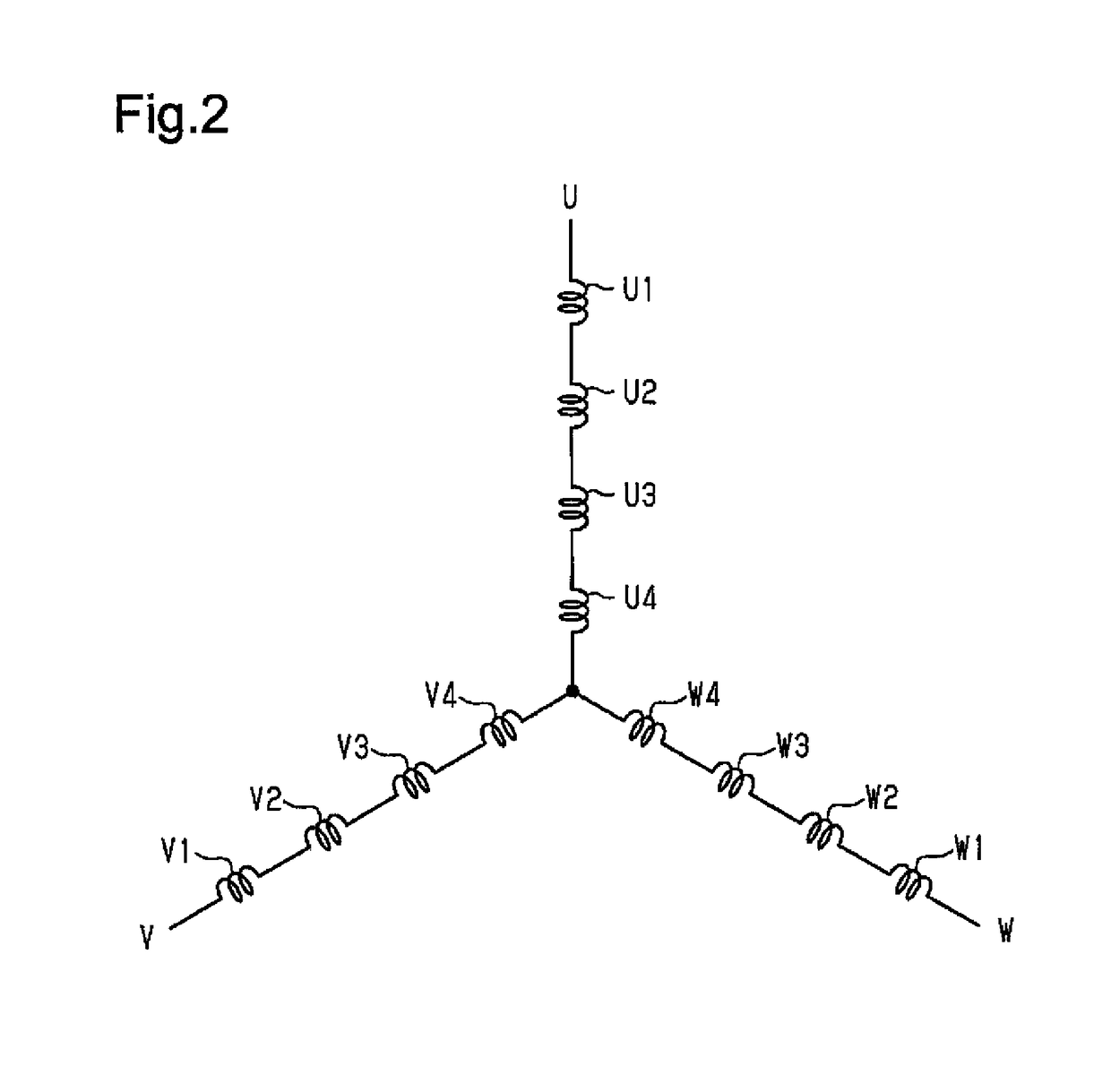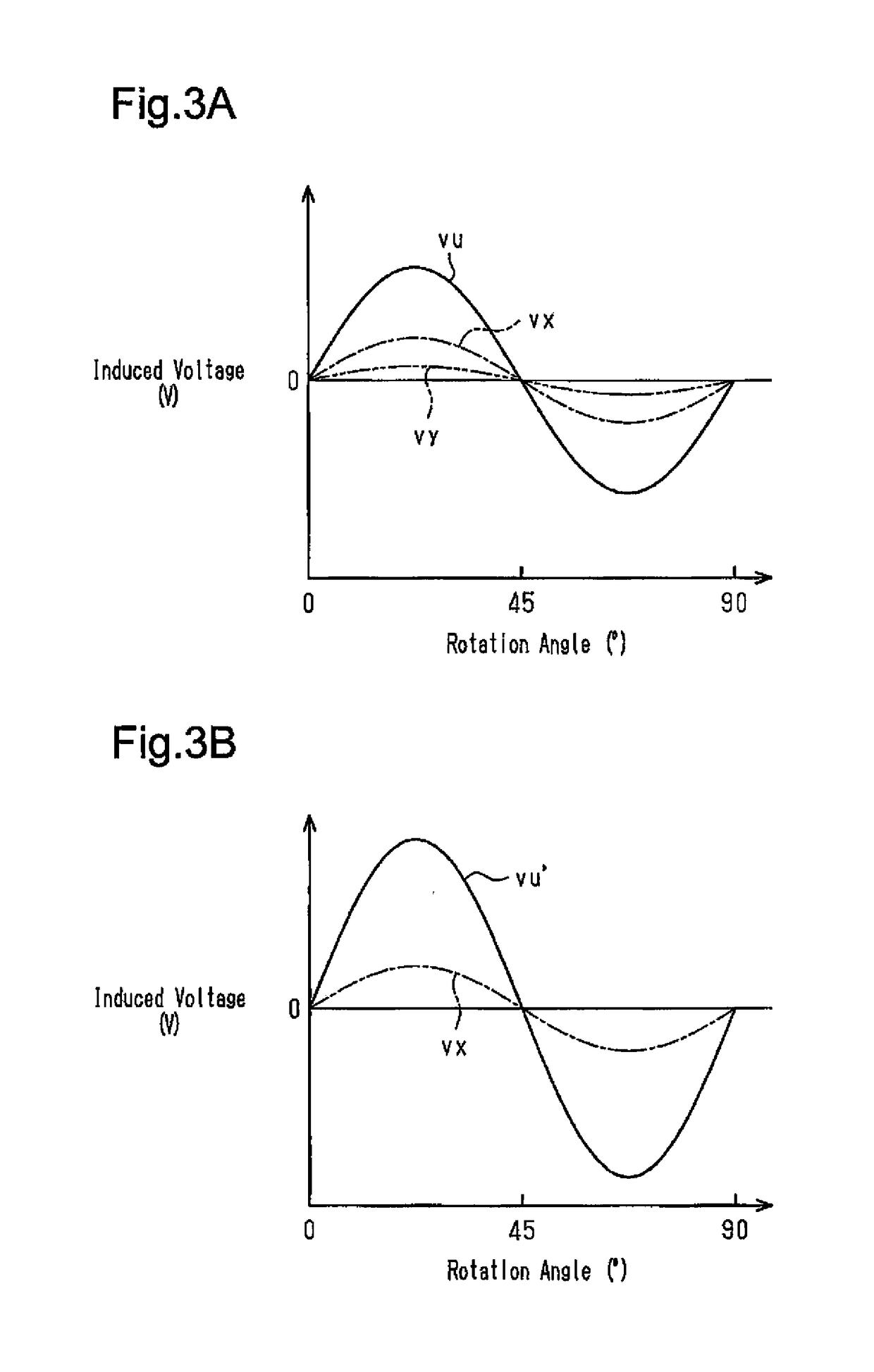Motor
a motor and motor technology, applied in the direction of electric motor control, magnetic circuit shape/form/construction, magnetic circuit rotating parts, etc., can solve the problems of reducing the obtained torque, and achieve the effect of increasing the flux linkage, increasing the induced voltage, and lowering the motor outpu
- Summary
- Abstract
- Description
- Claims
- Application Information
AI Technical Summary
Benefits of technology
Problems solved by technology
Method used
Image
Examples
first embodiment
[0054]a motor will now be described.
[0055]As shown in FIG. 1, a motor 10 according to the present embodiment is configured as a brushless motor and includes an annular stator 11 and a rotor 21 arranged at an inner side of the stator 11.
[0056]Structure of Stator
[0057]The stator 11 includes a stator core 12 and windings 13 wound around the stator core 12. The stator core 12 is substantially ring-shaped and formed from a magnetic metal. The stator core 12 includes twelve teeth 12a extending inward in the radial direction at equal angular intervals in the circumferential direction.
[0058]There are twelve windings 13, the number of which is the same as the teeth 12a. The windings 13 are wound as concentrated windings in the same direction around the teeth 12a, respectively. That is, the twelve windings 13 are arranged in the circumferential direction at equal angular intervals (thirty-degree intervals). The windings 13 are classified into three phases in accordance with the supplied drive...
second embodiment
[0124]a motor will now be described.
[0125]As shown in FIG. 10, a motor 110 according to the present embodiment is configured as a brushless motor in which a rotor 121 is arranged inside an annular stator 11. The configuration of the stator 11 is identical to that of the stator 11 according to the first embodiment, and thus detailed descriptions thereof are omitted. The configuration of windings 13 of the stator 11 is also identical to that of the windings 13 according to the first embodiment shown in FIG. 2.
[0126]Structure of Rotor
[0127]As shown in FIGS. 10, 11, and 12, the rotor 121 includes a rotation shaft 122, paired rotor cores 123n and 123s with the same shape, and a permanent magnet 124 arranged between the paired rotor cores 123n and 123s in the axial direction. The rotor cores 123n and 123s are made of a magnetic metal. In the following description, a rotor core that abuts against an N-pole-side end surface of the axially magnetized permanent magnet 124 is referred to as th...
third embodiment
[0212]a motor will now be described.
[0213]As shown in FIG. 21A, a motor 210 according to the present embodiment is configured as a brushless motor in which a rotor 221 is arranged inside an annular stator 11. The configuration of the stator 11 is identical to that of the stator 11 according to the first embodiment, and thus detailed descriptions thereof are omitted. The configuration of windings 13 of the stator 11 is also identical to that of the windings 13 according to the first embodiment shown in FIG. 2.
[0214]Structure of Rotor
[0215]As shown in FIG. 21B, the rotor 221 includes a rotor core 222 and permanent magnets 223. The rotor core 222 is made of a magnetic metal in a substantially disc shape, and a rotation shaft 224 is fixed to the center portion. Two magnet fixing portions 225 and four projections 226 are formed on the outer circumferential part of the rotor core 222.
[0216]The magnet fixing portions 225 are opposed to each other at 180° in the circumferential direction. T...
PUM
 Login to View More
Login to View More Abstract
Description
Claims
Application Information
 Login to View More
Login to View More - R&D
- Intellectual Property
- Life Sciences
- Materials
- Tech Scout
- Unparalleled Data Quality
- Higher Quality Content
- 60% Fewer Hallucinations
Browse by: Latest US Patents, China's latest patents, Technical Efficacy Thesaurus, Application Domain, Technology Topic, Popular Technical Reports.
© 2025 PatSnap. All rights reserved.Legal|Privacy policy|Modern Slavery Act Transparency Statement|Sitemap|About US| Contact US: help@patsnap.com



